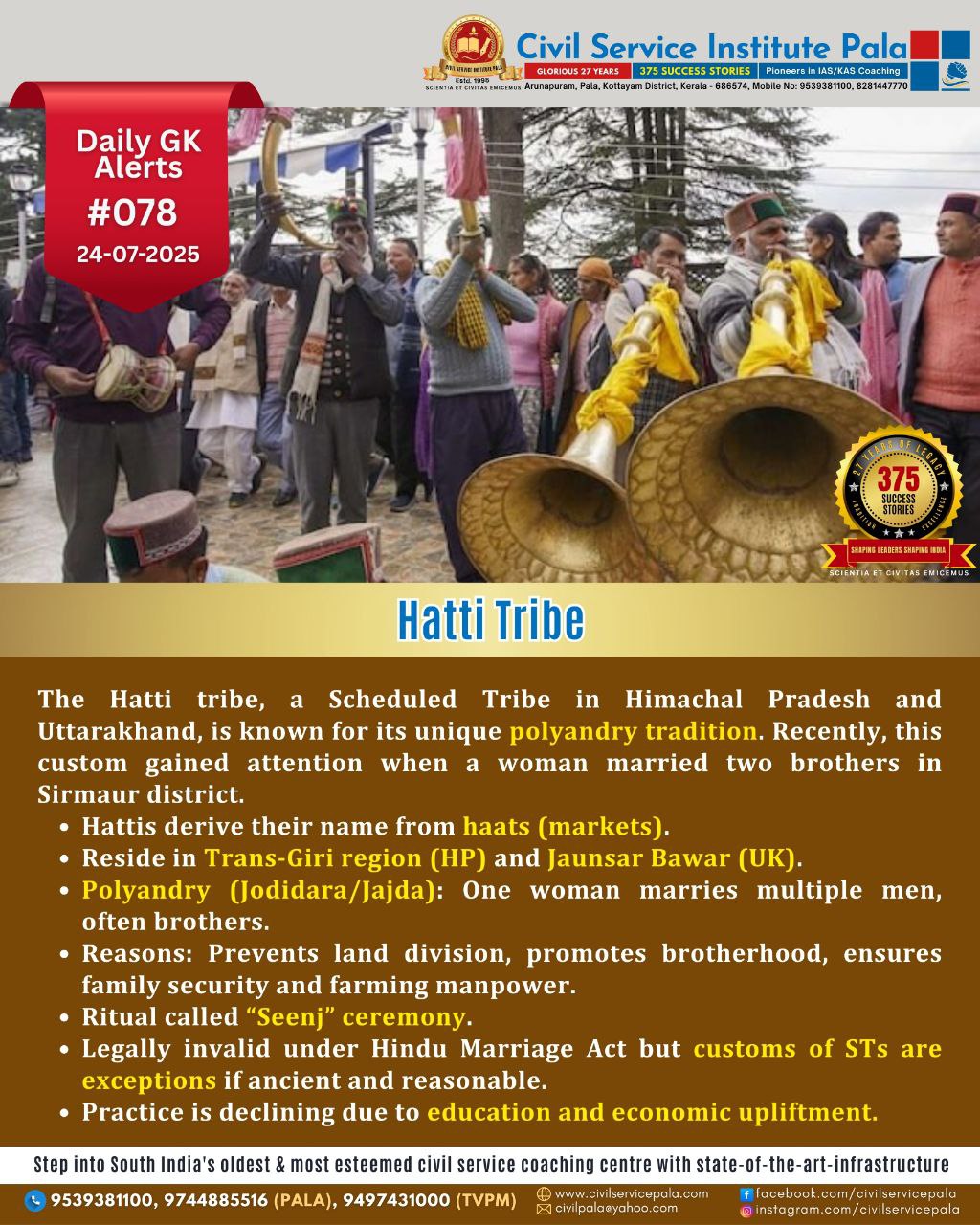
Hatti Tribe
Hatti Tribe and Their Polyandry Tradition
Who Are the Hattis?
The Hattis are a Scheduled Tribe (ST) residing mainly in Himachal Pradesh’s Trans-Giri region and Uttarakhand’s Jaunsar Bawar. Their name originates from “haats” (rural markets) where they historically sold local produce and meat. They live between the Giri and Tons rivers and are known for unique customs and community governance under their traditional council, Khumbli.
What is Polyandry?
Polyandry refers to one woman marrying multiple men. Among Hattis, it is known as Jodidara or Jajda, usually in fraternal form, where brothers share a wife. The ritual involves the “Seenj” ceremony, local songs, and blessings for sweetness in marital life.
Reasons for Polyandry
Polyandry emerged to:
* Preserve ancestral land by preventing its division among brothers.
* Promote brotherhood within joint families, even among half-siblings.
* Ensure security and manpower for farming in hard hilly terrains, supporting economic stability through collective agricultural work.
Recent Practice and Legal Status
Recently, a woman, Sunita Chauhan, married two brothers in Sirmaur district, reviving public debate. Though Hindu Marriage Act, 1955 does not validate polyandry, Scheduled Tribes may continue ancient customs if not against public policy.
While polyandry traditions among the Hatti tribe ensured economic and social stability historically, modern literacy and economic progress have reduced its prevalence. However, in certain villages, it remains an accepted practice, reflecting the community’s strong kinship systems and adaptation to their geographic and economic realities.



